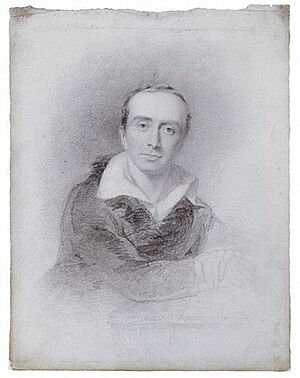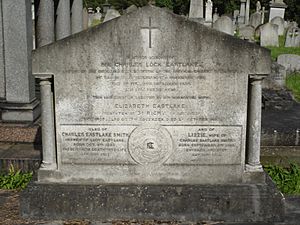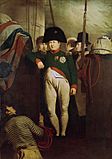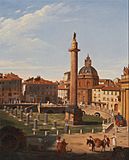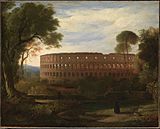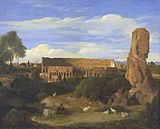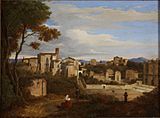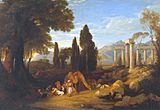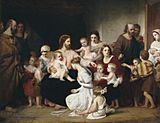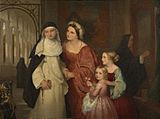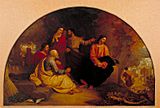Charles Lock Eastlake facts for kids
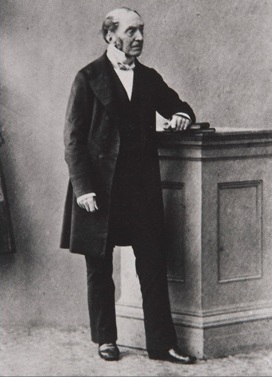
Sir Charles Lock Eastlake (born November 17, 1793 – died December 24, 1865) was an important British artist and art expert from the 1800s. He was a talented painter, but he also helped manage art galleries, collected artworks, and wrote about art. He became the very first director of the famous National Gallery in London. He was also the head of the Royal Academy, a big art institution, for many years.
Contents
Early Life and Art Training
Charles Eastlake was born in Plymouth, Devon, England. His father was a lawyer. Charles went to local schools and briefly attended Charterhouse School in London. From a young age, he knew he wanted to be a painter.
In 1809, he became the first student of a painter named Benjamin Haydon. He also studied at the Royal Academy schools in London. This is where he later showed his own paintings.
Travels and Early Success
Eastlake's first painting was shown in 1815. That same year, he visited Paris and studied famous artworks at the Louvre museum. His first big success was a painting called Napoleon on Board the Bellerophon in Plymouth Sound.
This painting showed Napoleon, a famous French leader, on a ship in Plymouth harbor. Eastlake had rented a boat to get close to the ship and sketch Napoleon.
In 1816, Eastlake traveled to Rome, Italy. While there, he painted portraits of important British people, including other artists like Sir Thomas Lawrence and J. M. W. Turner. He also visited Naples and Athens.
Even though he lived mostly in Europe, Eastlake regularly sent his paintings back to London to be shown. In 1827, he became a member of the Royal Academy. Three years later, he moved back to England for good. He continued to paint historical and religious scenes, often set in beautiful Mediterranean landscapes.
Art Historian and Gallery Director
Eastlake was not just a painter; he was also a respected art historian. He translated important books about art and color. For example, he translated Goethe's Zur Farbenlehre (which means Theory of Colours) in 1840. He also helped edit a book about the history of painting by Franz Kugler.
Because of his knowledge and reputation, Eastlake was chosen in 1841 to be the secretary of the Fine Arts Commission. This group was in charge of how the government supported art.
He also advised the National Gallery, London on which artworks to buy. In 1843, he became the Gallery's second Keeper. He later left this job, but he returned in 1855 as the first Director of the National Gallery. This time, he had more power to make decisions.
In 1849, he married Elizabeth Rigby. She was also an art historian and translated German art books. They worked together on many art history projects.
Leadership Roles and Recognition
Eastlake became a very important person in the British art world.
- In 1850, he was elected President of the Royal Academy and was made a knight, becoming "Sir Charles Eastlake."
- In 1853, he became the first President of the Photographic Society.
- In 1855, he became the first Director of the National Gallery.
Cambridge University gave him an honorary degree in 1864, recognizing his contributions.
Legacy
Sir Charles Eastlake passed away in Pisa, Italy, on Christmas Eve in 1865. He is buried in Kensal Green Cemetery in London.
In his will, he arranged for the National Gallery to buy his own collection of paintings. His wife, Lady Eastlake, sold his art history books to the Gallery's library. His work as a painter, art historian, and director greatly shaped the art world in Britain during his time.
Gallery
-
Christ Blessing Little Children, 1839
See also
- On Vision and Colors


